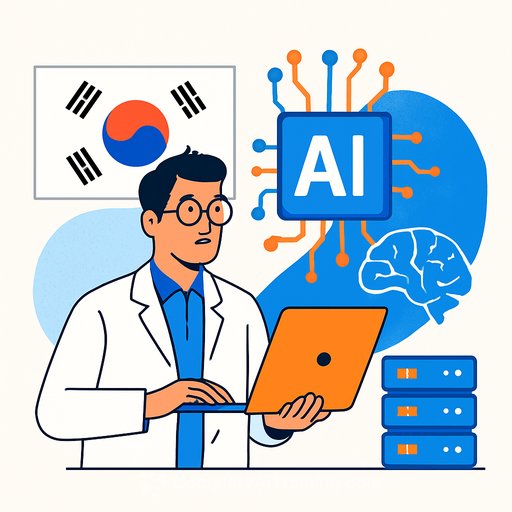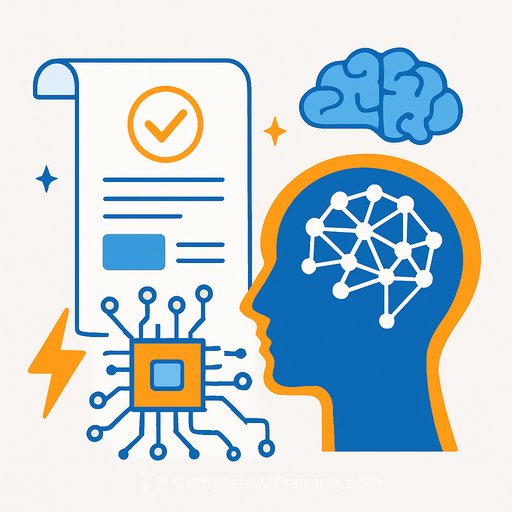South Korea to name "national scientists" to stem AI talent outflow
South Korea is moving to slow the outflow of top researchers with a new "national scientists" program. The plan prioritizes AI and core science fields, pairing recognition with funding, resources, and fewer administrative hurdles.
About 20 scholars will be selected each year over the next five years, for a total of 100. Designated researchers will receive a presidential certificate, research grants, travel support, and institutional backing to stabilize their labs and accelerate results.
What the presidential office is signaling
Compensation gaps matter, but they're not the whole issue. "It's also crucial who you work and conduct research with, the quality of the research environment, and, above all, whether sustainable growth is possible," said Ha Jung-woo, senior secretary to the president for AI and future planning.
The message is clear: improve day-to-day research conditions, build durable talent pipelines, and make scientific work a respected, stable profession at home.
Key measures researchers should know
- Annual cohort: ~20 "national scientists" per year; 100 total over five years.
- Support package: Presidential recognition, research funding, travel, and institutional support focused on long-term stability.
- Concurrent roles: Students and professors may hold industry positions to integrate academic work with real-world problems and close pay gaps.
- Post-retirement research: Expanded support to keep senior expertise active in labs and mentorship.
- New development fund: A corporate researcher development fund to back industry-academia pipelines.
- Admin relief: Easing of paperwork and compliance burdens that stall projects.
- Military service reform: Under review for researchers to reduce disruption to training and lab continuity.
- Compute access: 260,000 NVIDIA GPUs to be allocated to domestic teams with limited resources, following agreements made during the Asia-Pacific Economic Cooperation summit.
Regional talent pipelines
The plan isn't Seoul-only. The government will expand AI-focused science high schools in regional hubs, with new schools planned in Gwangju and North Chungcheong Province. The aim is to grow local talent that can compete globally without leaving home.
Partnerships among leading institutes - including KAIST, Gwangju Institute of Science and Technology (GIST), Ulsan National Institute of Science and Technology (UNIST), and Daegu Gyeongbuk Institute of Science and Technology (DGIST) - will be strengthened to create fast-track programs that move capable students into serious research sooner.
International recruitment
South Korea plans to attract 2,000 outstanding foreign scientists by 2030, with enhanced visa support to help them settle and build teams. If you run a lab, this is a window to recruit globally and scale capacity without waiting years for domestic pipeline expansion to mature.
What this means for your lab or team
- For PIs: Prepare a clear case for impact and mentorship. Highlight industry collaborations, student outcomes, and how additional compute or admin relief would translate into results.
- For graduate students and postdocs: Expect more pathways to industry-linked work without leaving academia. Build a track record that blends publications with problem-driven projects.
- For industry partners: Co-develop research plans with universities now. Shared appointments and the new fund can speed tech transfer and talent pipelines.
- For regional institutions: Position your programs for the fast-track model. Tight integration with national labs and major institutes will matter.
How to get ready
- Audit your compute needs and be specific: datasets, model sizes, expected GPU hours, and training schedules. Precision improves your case for allocation.
- Document administrative bottlenecks that slow your work. When relief arrives, you'll know exactly what to fix first.
- Formalize industry relationships: joint labs, adjunct roles, shared IP frameworks, and internship ladders.
- Strengthen mentorship: outline how you'll grow younger researchers into independent leaders within three to five years.
Why this could help curb the exodus
Pay isn't the sole reason researchers leave. People want pace, peers, and a serious environment that respects deep work. The program focuses on those levers - stability, recognition, compute, and fewer hoops - while linking academia to problems that actually move the needle.
What to watch next
- Application criteria and selection timelines for the first cohort.
- Details on GPU allocation: who qualifies, how requests are evaluated, and reporting requirements.
- Specifics of military service reform for researchers.
- Guidelines for concurrent academic-industry roles and IP handling.
If you're planning team upskilling to align with these changes, you can scan curated AI programs by role here: AI courses by job.
Bottom line: the government is betting on researchers who build, publish, and mentor - and on labs that plug into real problems. If that's you, line up your case now.
Your membership also unlocks:






